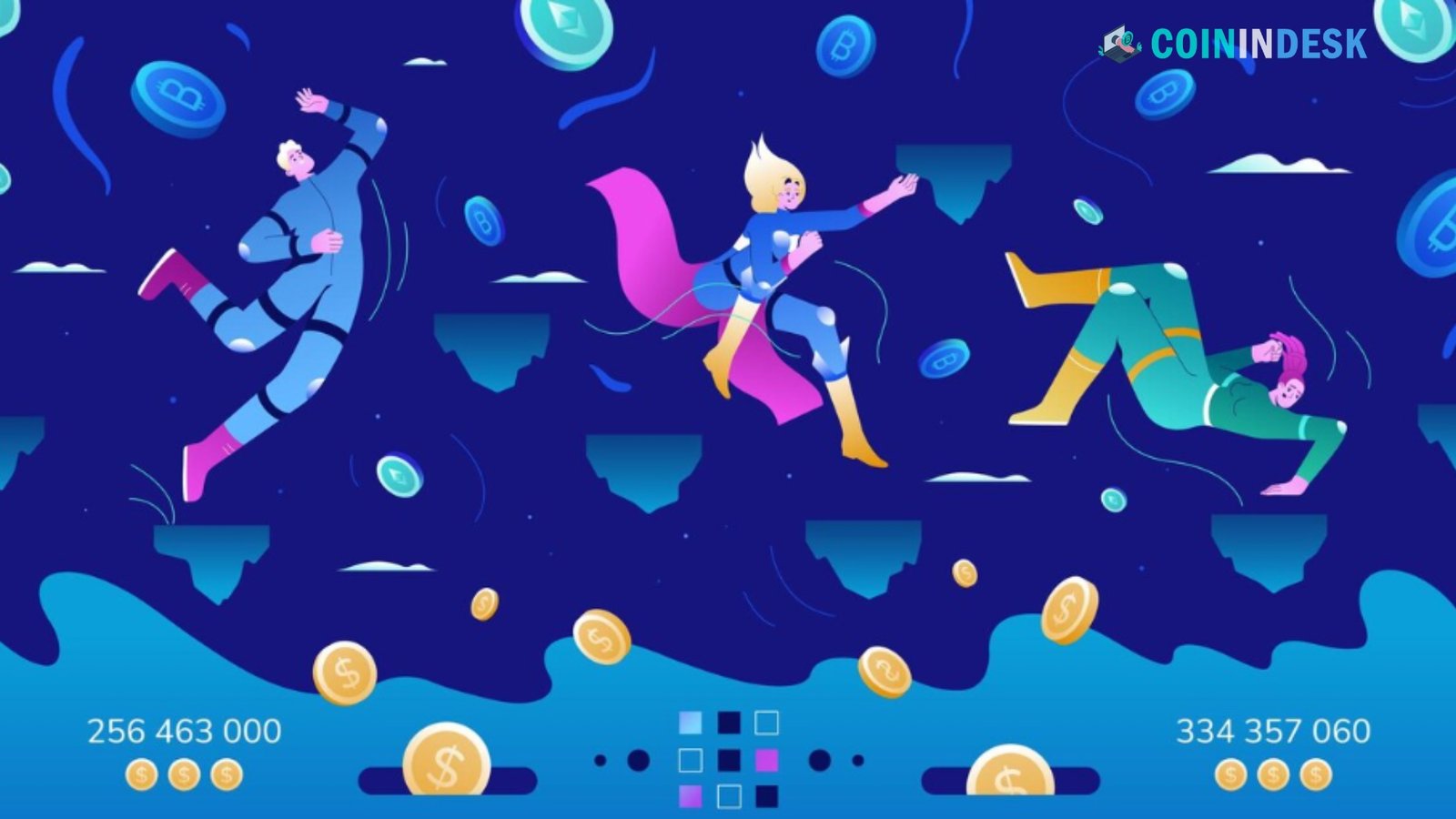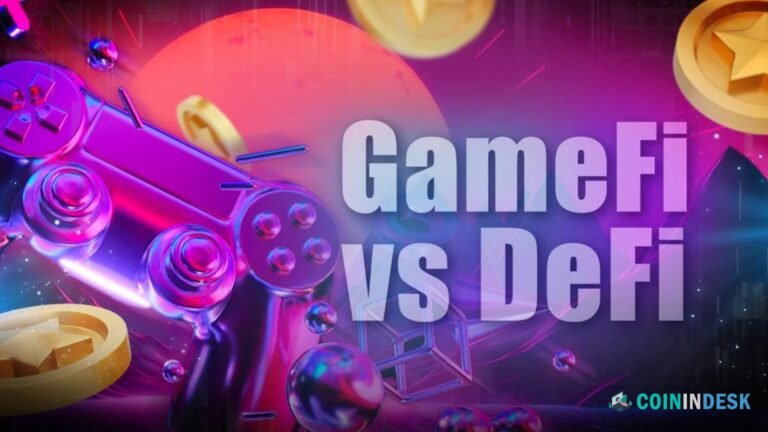GameFi vs. DeFi: Two fascinating areas of Web3 are game finance (GameFi) and decentralized finance (DeFi). While DeFi refers to the decentralized financial environment, GameFi describes the merging of gaming and finance. Both use blockchain technology, which might shake up the gaming and banking industries as we know them. A lot of convergence is happening between GameFi and DeFi, even though they sound like very separate sectors. In this essay, we will learn what makes GameFi different from DeFi.
What is GameFi?
Games that use blockchain technology, NFTs, and cryptocurrencies are called GameFi. Tokens or NFTs are the medium of exchange for the rewards in these games. Afterwards, gamers can spend their points for virtual goods, barter with other players, or convert them into fiat currency.
Though early GameFi efforts tended toward casual games with subpar gameplay, the genre has improved tremendously in subsequent years. From simple collection card games to intricate role-playing games, a vast array of Web3 games are now available.
What is DeFi?
Using blockchain technology, DeFi is a decentralized financial ecosystem where users may lend, borrow, trade, and earn interest on their money. DeFi may cause a sea change in the banking sector, albeit in its infancy.
As the Ethereum DeFi ecosystem expanded exponentially in 2020 and 2021, DeFi got off to a good start. Having said so, all chains’ total value locked (TVL) has dropped from $175 billion to $37 billion since late 2021.
Because no major institutions have bought into DeFi, the cryptocurrency has floundered throughout the crypto winter. The main reason is that there aren’t enough checks and balances, like KYC and AML procedures. Users have lost millions of dollars in funds due to many hacks and smart contract frauds affecting DeFi recently. Still, DeFi’s core features can facilitate the development of a banking system distinct from the current one.
How GameFi and DeFi Could Interplay in a Metaverse
The blockchain is the foundation of the metaverse, a virtual world in development. The metaverse is a new digital experience for gaming, social interaction, and business based on current efforts like Decentraland and The Sandbox.
The metaverse may see significant use of GameFi and DeFi. Tokens or NFTs could be used as prizes in virtual economies that players build within games. These protocols might power DeFi economies, which would also give participants access to financial services.
A new platform for GameFi and DeFi could emerge in the still-developing metaverse. In addition to making the metaverse more accessible and lucrative, these technologies have the potential to make it more immersive and entertaining for users.
How are GameFi and DeFi Converging?
There are several convergence points between GameFi and DeFi. To illustrate, the economies of many games nowadays are driven by DeFi protocols and integrated DeFi experiences, such as lending. Players can participate in DeFi activities like lending, borrowing, and trading with the tokens or NFTs they earn in this way. For example, games like Walken and StepN have included DeFi functionality despite consumer losses during the bad market.
In contrast, various initiatives are integrating gamification features into DeFi systems in an effort to draw in users, make DeFi more approachable and interesting, and boost user retention of DeFi services. Some initiatives, for instance, let users earn rewards only by playing games or finishing objectives.
The Potential of GameFi vs. DeFi
If GameFi and DeFi come together, it might lead to a new financial and gaming ecology. Both GameFi and DeFi have a massive amount of untapped potential. There are trillions of dollars in the global financial industry and $175 billion in the worldwide gaming business (Web2). The world may be changed forever if GameFi and DeFi seize even a small percentage of these markets.
Venture capital (VC) investments in GameFi and DeFi have surged since 2020, according to data compiled by CoinMarketCap. Venture capitalists invested $3.1 billion in GameFi and DeFi in 2020. By 2025, this number is projected to reach $100 billion, up from $25.2 billion in 2021.
GameFi’s popularity is expected to skyrocket in the years to come. The chance to win prizes just for playing games is sure to attract more and more individuals as word gets out about blockchain and NFTs. As more individuals lose faith in the status quo, there will be a shift toward non-traditional methods of handling money management. DeFi provides a decentralized and open solution for this purpose.
Within Web3, the metaverse has the potential to bring the GameFi and DeFi industries closer together, making it an important growth driver for both. Since the meteoric rise of metaverses in 2021, several tech titans, such as Meta and Apple, have released technologies to aid in the creation of this ecosystem, further fueling the trend.
Playing games in the metaverse gives players distinct experiences, making it a logical fit for GameFi. So, in the future of the metaverse, GameFi would be the experiencing layer, and DeFi would be the economic layer.


